How to overseed a lawn — a step-by-step guide to bringing your lawn back to life
Revive your lawn for spring
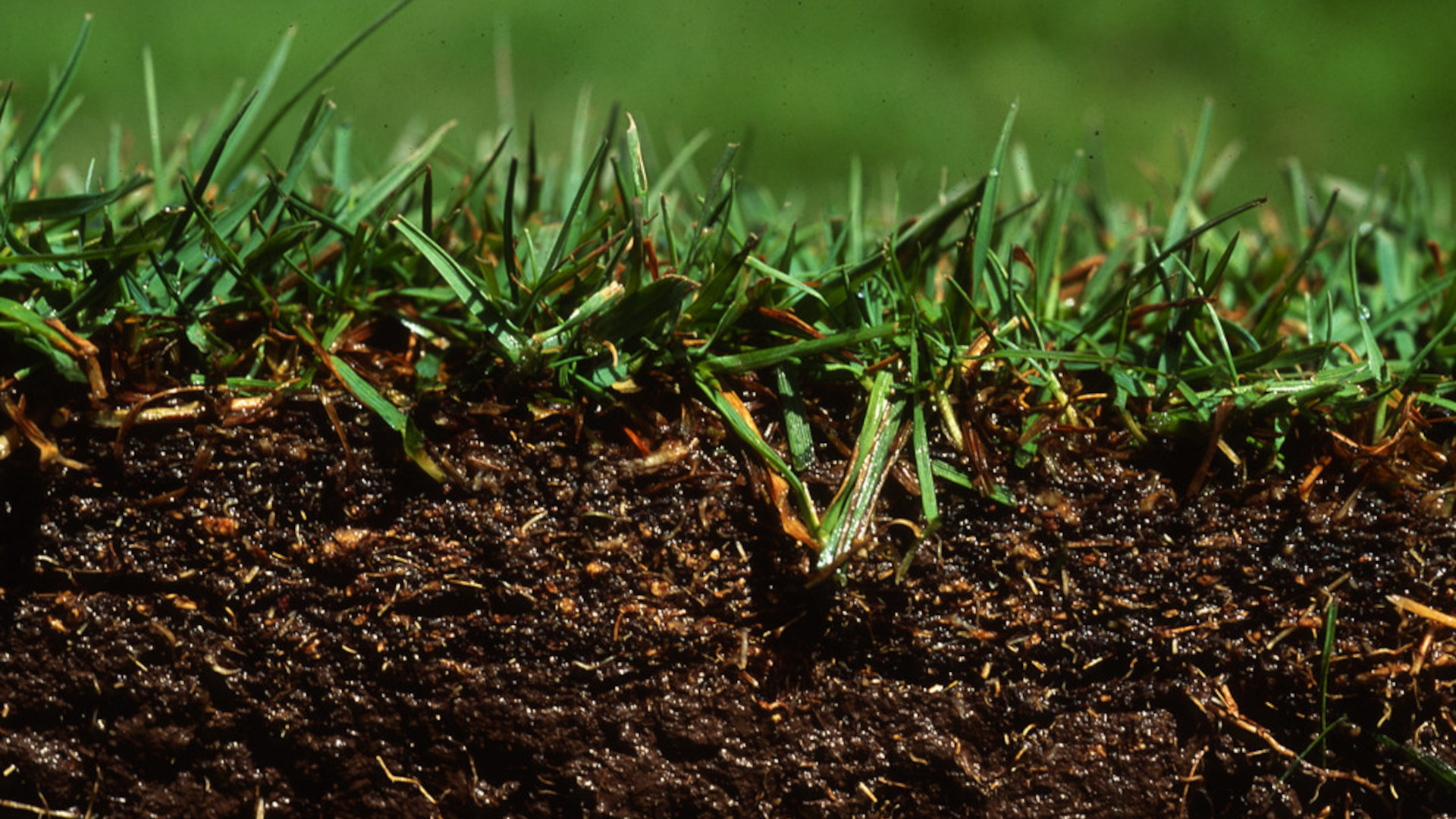
Knowing how to overseed a lawn will help you to quickly, easily and affordably help to restore it after enduring a cold, harsh winter.
Temperature and weather conditions can be equally damaging to grass, as can the amount of foot traffic which treads across the lawn whilst playing soccer or dining outside. The process of overseeding a lawn is about knowing how to plant grass seed over the top of an already existing lawn, as opposed to fixing patchy grass. It'll help to promote more grass growth in order to fill in space that might otherwise be taken by weeds, moss and either unwelcome lawn growth. Grass is hardy stuff which will keep fighting to hold its spot in the soil, particularly now with backup from more seeds to fill in the gaps.
According to Peter Chandler, Managing Director of Cobra Lawn Machinery, overseeding is particularly useful for thickening lawns and encouraging healthy growth.
“It can encourage a thicker, more vibrant lawn as it fills in any bare or damaged patches of grass, helping to improve its overall appearance while reducing the amount of weeds and moss,” says Peter.
“It’s also a great way of filling any sparse areas that may have had excessive wear and tear or damage over the summer from garden parties, children playing or, this year in particular, heat.”

Cobra Garden Machinery is a leading manufacturer of lawncare tools, including mowers, line trimmers, and more specialized equipment like spreaders and scarifiers. As Managing Director of the brand, Peter Chaloner has great insight into how to care for your lawn.
Allowing the time to overseed a lawn will make for a more even finish to your lawn, with no patches and fewer weed issues, and a finish to hopefully be proud of after it's first mow with one of the best lawn mowers.
The tools you'll need for overseeding a lawn
Learning how to overseed a lawn is an easy task, providing that you have the right tools for the job.
Sign up to receive the latest news, reviews, buying guides and deals direct to your inbox
- Aerator
- Lawn seed (such as this Scotts Turf Builder Grass Seed Fall Overseeding Mix on Amazon
- A seeder for evenly spreading said seed such as this handheld one at Target
- Watering can OR a sprinkler system just like the Orbit 58288 3-Arm High-Rise Sprinkler (Amazon)
- And a roller or plank
Reviews
Whirlpool 24" Stainless Steel AI Dishwasher Review
Napoleon TravelQ PRO285 Portable Gas Grill review
Dreame L40 Ultra Robot Vacuum Cleaner and Mop review: almost hands-free cleaning
GE Profile Smart Mixer with Auto Sense review: a powerful, thorough mixer
Echo eForce DPB-2500 review: a leaf blower as a snow removal tool?
DPAS-2100 + Pro Paddle Attachment review: a new way to remove snow this winter?
Midea MAD53109APK 5.5QT Air Fryer review: a small, simple, and highly effective option
Eureka J15 Pro Ultra Robot Vacuum review: hands-free cleaning for busy families
Knowing what is an aerator will help you to plan your yard space for aerating. The process of aerating will help to loosen compacted soil and improve drainage. It may be helpful to know the difference between a plug vs spike aerator, too, to ensure you get the best tool for your soil.
Now you're equipped with the list of tools you need, let's get on to overseeing our lawns.
Quick steps to overseed a lawn
- Find the right time of year
- Mow your lawn
- Improve your soil with aeration
- Overseed the lawn space
- Press the seed nice and gently
- Fertilize the soil but after a rest period
- Water, water and more water
Step by step guide: How to overseed a lawn
1. Find the right time

Timing is essential when overseeding a lawn. Doing it in winter, for example, will be a waste of time and money as it'll likely be too cold for the seeds to survive. Ideally you'll want the soil temperature to be at least 50°F. Keep in mind that soil warms up more slowly than air so our fall lawn care tip would be to wait until air temperatures are at least 55°F for a few weeks before you start.
Depending on where you are, make sure it's warm enough to get working. That usually means overseeding during the spring or the wet fall as these are good times. You can overseed in the summer too but it can be too hot then so anything over 77°F, don't even try.
2. Mow your lawn
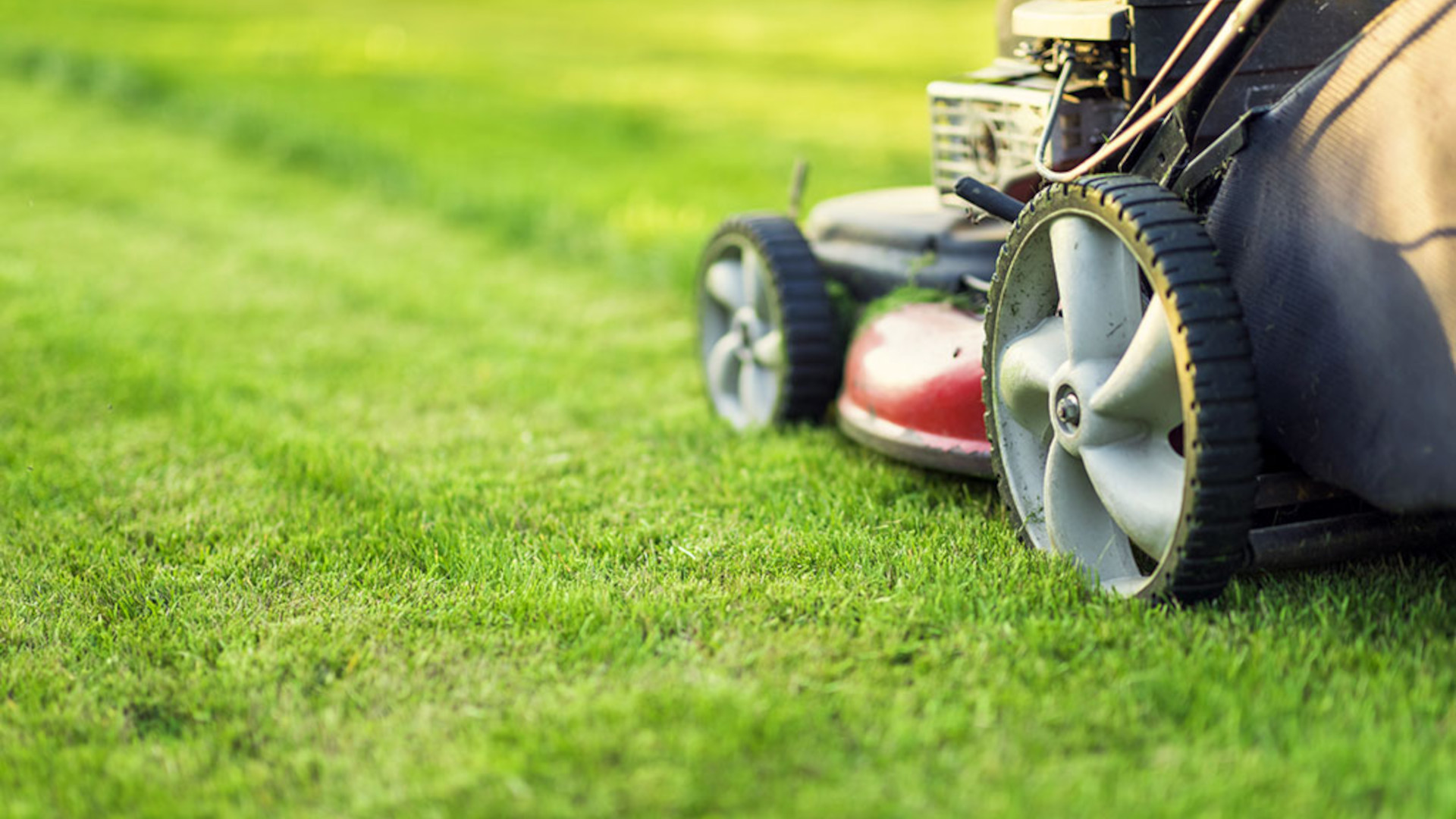
It's important to clear the space so that new seed can actually make it to the soil on your lawn, so find the best time to mow the lawn in your region and mow it down to about an inch. Do ensure that you're somehow collecting up all the grass cuttings and any leaves or detritus on the lawn space as you go. This can either be by hand or with a bagger mower, like this Greenworks 40V 21" Brushless Cordless (Smart Pace / Self-Propelled) Lawn Mower on Amazon is also (almost) maintenance-free.
This clearance will not only help those seeds make it to the soil but will also clear space for the shoots coming up from this new grass, ensuring it has space to grow and drink up plenty of light.
3. Weed the lawn
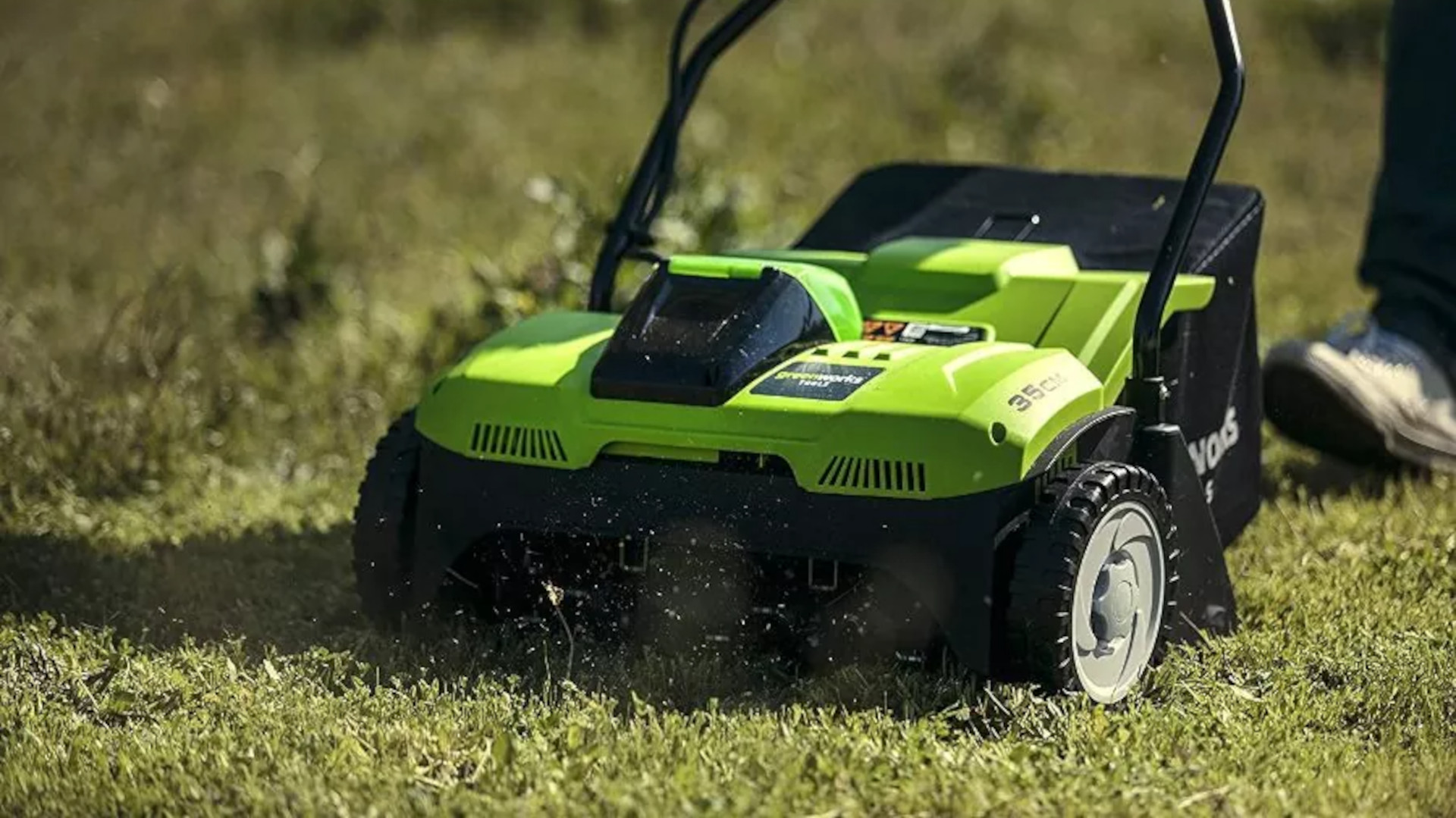
"You need to give the seed its best chance by firstly removing competition" says gardening expert Adam Woolcott. "This comes in the form of moss and weeds so use your preferred lawn treatment product, be it organic or not, and remember you can’t so seed for some time after using some lawn weed treatments. Once the weeds and moss have died remove any dead material with a lawn rake."
A good way to remove moss from the surface is to understand what is a dethatcher, which will ultimately remove a layer of thatch and moss from your lawn grasses so that water and fertilizer will reach the lawn’s root network, while discouraging unwanted thatch-loving weeds and fungi. This Greenworks 40V 15 inch Dethatcher/Scarifier from Amazon would be a suitable option.

Adam, a Vlog/blogger For Webb, has over 30 years of experience as a professional gardener and has many accolades but is probably best known for his four Gold Medals at The Royal Horticultural Society’s Chelsea Flower Show in London (UK) and his three BBC/RHS People’s Choice Awards at the show (of which he is particularly proud) which he won as one half of Woolcott & Smith.
4. Improve your soil

Building a good base for the new seeds to grow in is a very important part of the process, or you could just be wasting seeds. A great way to do this is to make holes in the soil to give it fresh air and space for water and light too.
"This can be done by using a lawn rake or gently breaking up the surface with a border fork, just the first centimetre or so." says Adam.
Alternatively, an aerator like this Osaava Rolling Lawn Aerator from Amazon will allow you to push along the device as it rolls, moving spikes into and out of the soil. This will kill some current grass but making space for the new by killing some of the old is all part of life's process.
5. Feed the lawn
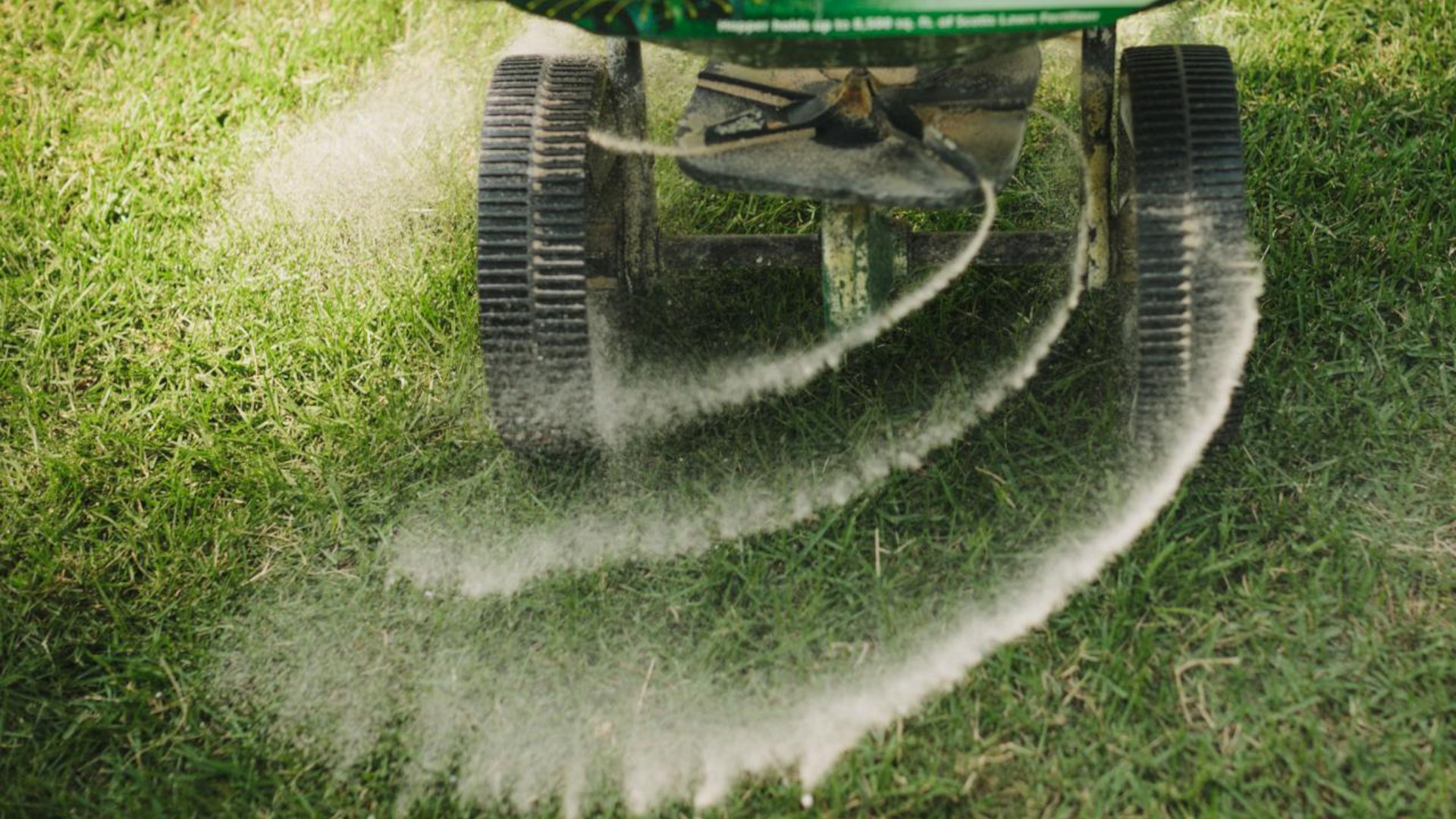
If you haven't fed the lawn for several months, or since early spring, then it would be worth fertilizing the lawn now to strengthen the existing grass. This will also prevent any reactions occurring between the new grass shoots and the fertilizer.
Choose a fertilizer which is suitable for use in fall. Once applied and watered in, you will be able to start over seeding after four days. Use about 0.8oz per 10 square feet and separate that out into the amounts which you can distribute vertically and horizontally across the lawn. This Scotts Turf Builder WinterGuard Fall Lawn Food from Amazon would be suitable.
6.Overseed
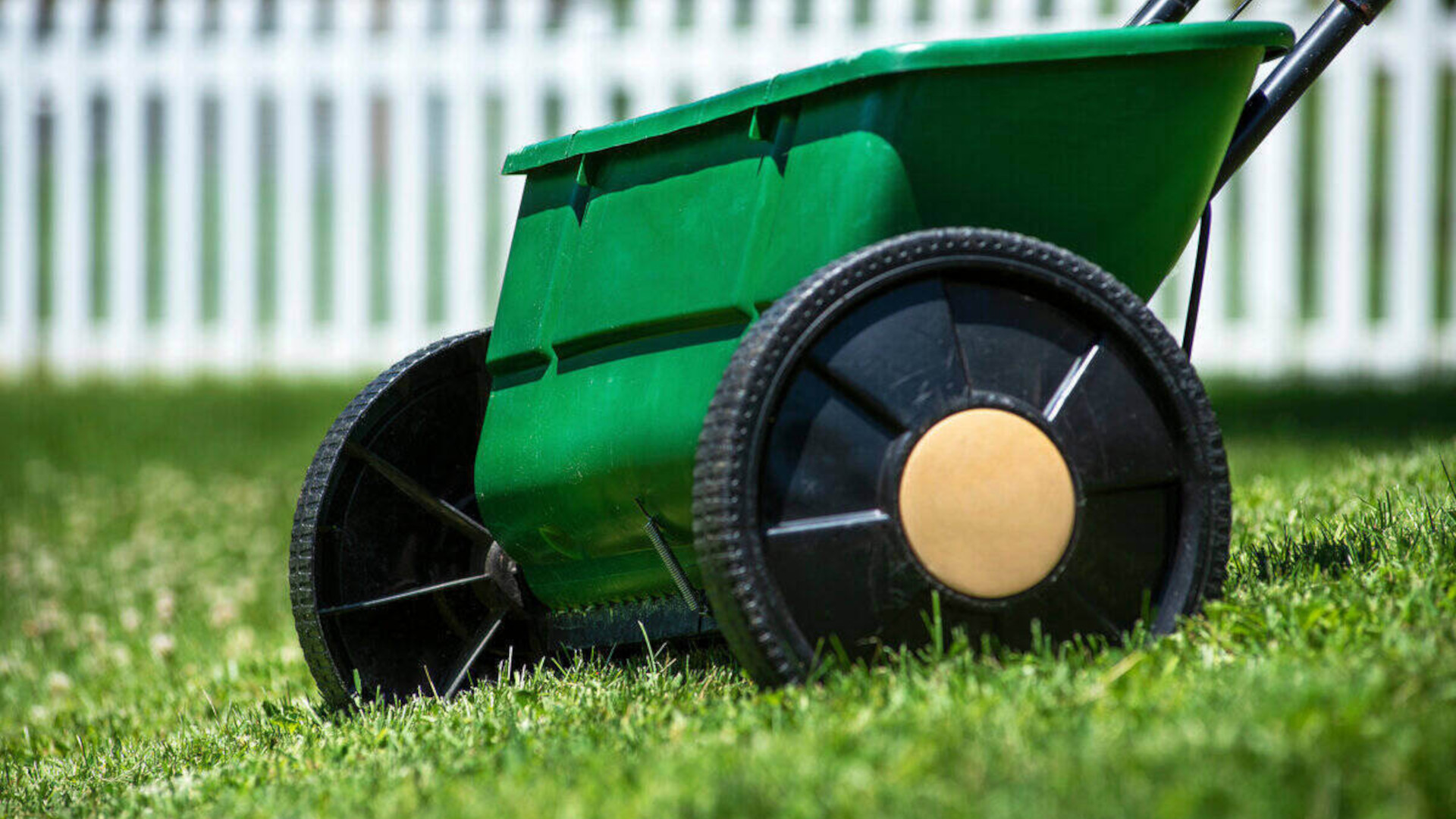
With all the above steps taken care of it's time to do the actual seeding part of this process. Make sure to calculate how much seed you need for the space you're working on; you'll want to sow about 0.6 ounces of seed per 10 square feet of lawn, roughly. Once you've got that seed weighed out, separate that into two sections. Use the first to lay horizontally across the lawn, then use the second half but make you pass vertically along the space.
While you can spread the seed by hand, it's difficult to get an even spread – ensuring an even lawn finish – so it is best to use a seed spreader like this Scotts Turf Builder EdgeGuard Mini Broadcast Spreader on Amazon where available.
7. Press the seed

Seeds need to make it into the soil to germinate and the likelihood of this happening can be improved by pressing the seeds into the soil. One way to do this is to rake across the grass gently, being sure to clean the rake tines with a shake off of the sticky seeds as regularly as you go.
Using a seed roller like this Arnot Heavy Duty Seed Roller on Amazon is a really helpful way to press those seeds into the soil. It doesn't need to be very heavy, potentially crushing the grass, but a weighted roller is ideal. You can buy heavy metal ones or clever plastic versions that you fill with water to add – and control – the weight.
If you don't have any of these tools then you can lay wooden planks and walk over them to squash down – just try to be as gentle as you can.
8. Water

You'll need lots of water in the soil with little and often being better than big amounts further apart. The idea is to keep soil at the ideal moisture level so the seeds have it available as and when they need.
To start with, you'll want to initially water your soil four times a day until the seeds germinate. Then this can drop down in regularity to daily, and space it out more as you see the new grass coming in. This is where a sprinkler, such as the Rain Bird 25PJLSP Hose-End Brass Impact Sprinkler on Amazon, and a timer would be ideal to make sure the soil gets consistent moisture without it taking up too much of your time.
Remember to (try) avoid walking on the new grass for at least 14 days after germination, and keep it free from smothering fall leaves. That said, it's important to get a cut of the grass in no longer than a month after the germination, in order to kick-in the plant into the routine of damage and repair.
FAQs
How do you prepare your lawn for overseeding?
There are a few key steps to prepare your lawn for overseeding including mowing the grass, aerating the soil and fertilizing. Make sure you cut the current grass to about an inch in length being sure to clean all cuttings and leaves – so the seeds can actually make it to the soil.
Then use a rake or aerator to spike the soil creating access to air, water and space for the new seeds. Fertilizing helps strengthen the soil to encourage the new seed, but this should be done four days before or four days after overseeding to avoid any unwanted reactions with the seeds.
When is the best time to overseed your lawn?
The short answer is don't do it in winter as that's too cold for the seeds. Outside of that you can potentially overseed in autumn, fall and even the cooler parts of the summer. The key is to have the soil temperature at over 50°F, which is slower to heat than air so it will have to have been at least 55°F for a few weeks before you can overseed.
In the summer it can be too hot and dry so be sure it's well under 77°F for a while before you attempt to overseed.
How much grass seed do I need to overseed an existing lawn?
The general rule is that if you overseed an existing lawn space then you will want to sow about 0.6 ounces of seed per 10 square feet of lawn, roughly. Importantly this needs to be done evenly in order to get the most even end result. Get this by using a seed spreader and spreading half the soil, moving across the lawn, and the other half moving up and down the space.
Luke is a veteran tech journalist with decades of experience covering everything from TVs, power tools, science and health tech to VPNs, space, gaming and cars. You may recognize him from appearances on plenty of news channels or have read his words which have been published in most tech titles over the years. In his spare time (of which he has little as a father of two) Luke likes yoga, surfing, meditation, DIY and consuming all the books, comics and movies he can find.

